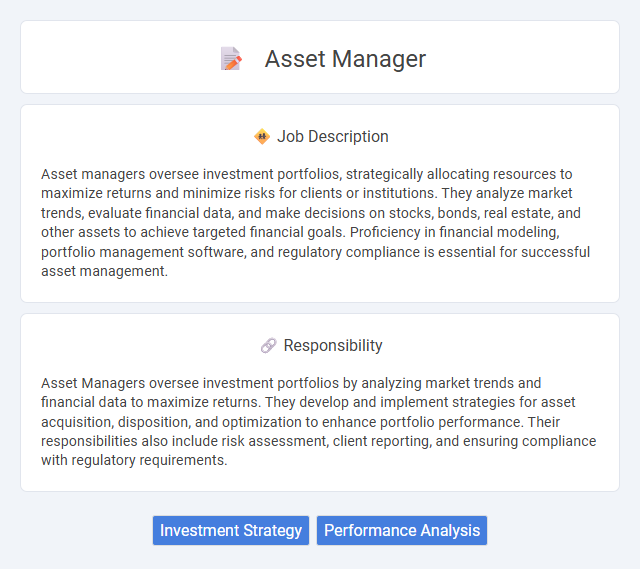
Asset managers oversee investment portfolios, strategically allocating resources to maximize returns and minimize risks for clients or institutions. They analyze market trends, evaluate financial data, and make decisions on stocks, bonds, real estate, and other assets to achieve targeted financial goals. Proficiency in financial modeling, portfolio management software, and regulatory compliance is essential for successful asset management.
Individuals who are detail-oriented and possess strong analytical skills have a higher probability of thriving as Asset Managers. Those comfortable with high-pressure decision-making and managing large portfolios might find this role suitable. Conversely, people who struggle with multitasking or dealing with fluctuating market conditions could face challenges in this position.
Qualification
An Asset Manager must possess strong financial analysis skills and expertise in portfolio management to optimize investment performance and risk. Proven knowledge of market trends, real estate, equities, or fixed income assets is essential, along with proficiency in financial modeling and valuation techniques. A bachelor's degree in finance, economics, or business administration combined with relevant certifications such as CFA or CAIA enhances qualifications for this role.
Responsibility
Asset Managers oversee investment portfolios by analyzing market trends and financial data to maximize returns. They develop and implement strategies for asset acquisition, disposition, and optimization to enhance portfolio performance. Their responsibilities also include risk assessment, client reporting, and ensuring compliance with regulatory requirements.
Benefit
Asset Manager roles likely offer significant financial benefits through performance-based bonuses and profit-sharing opportunities. The position may provide long-term wealth accumulation by managing diverse investment portfolios and optimizing asset allocation. Professional growth and networking advantages are probable outcomes, enhancing career advancement and industry influence.
Challenge
Asset manager roles likely involve navigating complex financial markets and adapting to rapidly changing economic conditions. The challenge of balancing risk management with growth opportunities demands keen analytical skills and strategic decision-making. Success in this position probably depends on staying ahead of market trends and effectively managing diverse investment portfolios.
Career Advancement
Asset managers can accelerate their careers by gaining expertise in financial analysis, portfolio management, and risk assessment, which are essential for managing diverse investment portfolios effectively. Obtaining certifications like the CFA (Chartered Financial Analyst) enhances credibility and opens opportunities for senior roles such as portfolio manager or director of asset management. Building strong client relationships and demonstrating consistent performance in maximizing returns can lead to leadership positions and increased responsibility within financial institutions.
Key Terms
Investment Strategy
An Asset Manager develops and implements investment strategies aimed at optimizing portfolio performance while controlling risk based on market analysis and client objectives. This role involves continuous evaluation of asset classes, including equities, bonds, and alternative investments, to maximize returns and ensure alignment with long-term financial goals. Effective asset management requires leveraging data-driven insights and staying updated on economic trends to adapt strategies for sustained growth.
Performance Analysis
Asset Managers conduct in-depth performance analysis to evaluate the return on investments against benchmark indices and risk-adjusted metrics. They utilize advanced analytics tools and financial models to track portfolio performance, identify trends, and optimize asset allocation strategies. Continuous monitoring of market conditions and portfolio diversification ensures maximized asset growth and risk mitigation.
 kuljobs.com
kuljobs.com